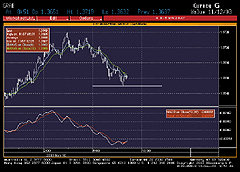Know Your Broker
Forex Trading Platforms And The Real World
by Chris Melendez
Here are some of the properties and pitfalls of online retail trading platforms versus the institutional foreign exchange execution systems.
Today's foreign exchange markets are rapidly acquiring new traders and investors. Many daytraders and equity investors imagine they can easily become forex traders. But those who venture into the world of foreign exchange are often handicapped by the lure of quick money and by systems that are designed to benefit the trading platform operator, not necessarily the individual trader.
The equity fallout of the last few years has drawn stock and commodity traders to the foreign exchange market. But I consider the retail forex market to be much like the Wild West; there are no benchmarks with which the industry can align itself. There are no set parameters, nor are there consistent rules. There is no central agency or body where standards can be set and enforced. Platform operators are aware of all this, and that is where problems arise.
There are important areas to discuss when it comes to trading platforms: leverage, highs and lows, hedging, commission (or lack thereof), slippage, re-quote, interest rates, and choosing a platform.
LEVERAGE
Unfortunately, leverage is often grossly misused, mainly because it is not well understood. Leverage is a great tool to use in forex -- as long as it is done responsibly. There are many firms out there today that offer 100 to 1 and even 400 to 1 leverage. That means that you could potentially open an account with $10,000 -- and control $4 million in the market.

Figure 1: FIRST THOUGHTS. After looking at this chart, any retail trader would think a low has been hit. But that may not be the case. There are other factors behind the scenes.
Excerpted from an article originally published in the June 2004 issue of Technical Analysis of STOCKS & COMMODITIES magazine. All rights reserved. © Copyright 2004, Technical Analysis, Inc.
Return to June 2004 Contents